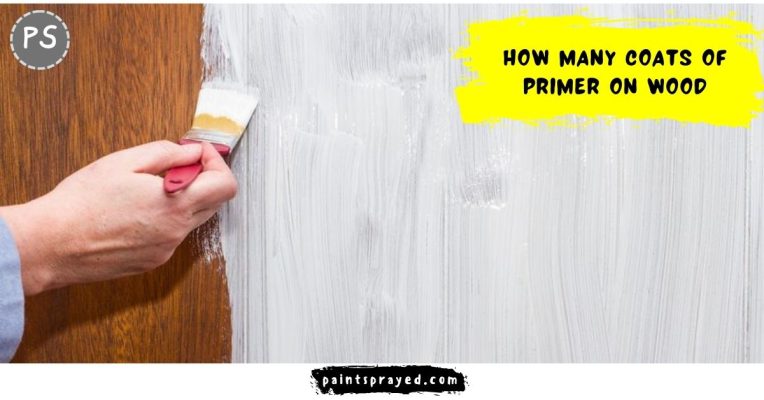When it comes to painting wooden surfaces, applying a coat of primer is an important step to ensure the longevity and quality of the final paint job.
Primer helps to provide a smooth and even base for the paint to adhere to, and can also help to cover up any imperfections or stains on the wood. This guide on How many coats of primer on wood is recommended to read for newbies.
However, many people wonder how many coats of primer are necessary for the best results.
The answer to this question ultimately depends on a number of factors, including the type of wood, the condition of the wood, and the intended use of the painted surface.
How Many Coats of Primer on Wood?
As a general rule, two coats of primer are recommended for most wooden surfaces. The first coat seals the surface and the second provides a uniform base for the paint.
However, the actual number of coats may vary depending on factors such as the type of wood, its condition, the type of primer used, and the desired final color.
If the wood is porous, or rough, or if a highly translucent paint is being used, additional coats of primer may be necessary.
It is always best to follow the manufacturer’s instructions and consult a professional if unsure.
Primer is an essential step in the painting process that ensures a smooth and long-lasting finish. It provides a base layer of protection, seals porous surfaces, and helps the paint adhere better.
For wooden surfaces, the number of coats of primer is a crucial factor that can determine the success of the final finish.
When it comes to priming wood, the general rule of thumb is to apply two coats of primer.
The first coat is meant to seal the surface and the second coat is to provide a uniform base for the paint. However, the actual number of coats can vary depending on several factors.
The type of wood and its condition Different types of wood have varying levels of porosity and roughness, and this affects the way the primer adheres to the surface.
Softwoods, like pine and cedar, are more porous and absorbent, and they require more coats of primer to seal the surface.
On the other hand, hardwoods, like oak and maple, are less porous and require fewer coats of primer.
The condition of the wood is another factor to consider. If the wood is new and has never been painted or treated, then two coats of primer should suffice.
But if the wood is old, or if it has been previously painted, it may require additional coats of primer.
Old paint may have chipped or peeled, leaving rough spots that need to be smoothed out with primer.
The type of primer and paint The type of primer and paint you use can also affect the number of coats you need.
Some primers are specially formulated to provide better coverage and adhesion, while others may require multiple coats to achieve the desired result.
For example, oil-based primers tend to provide better coverage and adhesion than water-based primers.
However, they are also more difficult to work with and take longer to dry. If you’re using an oil-based primer, you may only need one coat.
But if you’re using a water-based primer, you may need two or more coats to achieve the same level of coverage.
The same goes for paint. Some paints are more pigmented and opaque, while others are more translucent.

If you’re using highly pigmented paint, you may only need one coat, but if you’re using more translucent paint, you may need two or more coats to achieve full coverage.
The color of the primer and paint The color of the primer and paint can also affect the number of coats you need.
If you’re priming and painting a light-colored wood surface, you may only need one coat of primer and one coat of paint.
However, if you’re painting a dark-colored wood surface, you may need two or more coats of primer and paint to achieve full coverage.
FAQ’s of How many coats of primer on wood
Conclusion of How Many Coats of Primer on Wood
In conclusion, the number of coats of primer you need for wood can vary depending on several factors, including the type of wood.
Its condition, the type of primer and paint you use, and the color of the primer and paint.
As a general rule, two coats of primer are sufficient for most wooden surfaces. However, if the wood is porous, or rough, or if you’re using translucent paint, you may need additional coats to achieve the desired result.
To get the best results, always follow the manufacturer’s instructions, and don’t hesitate to consult a professional painter if you’re unsure.
With the right preparation, you can ensure that your wooden surfaces look great and last for years to come.

Matthew Edward is a professional painter who loves to paint and wants to share useful tips and tricks which he had learned in many years of experience in painting. He also used many products that can be used for painting he has tried and tested each and every product to give an unbias opinion about it in his review. This blog is very useful for those newbies who want to learn painting without making mistakes.






